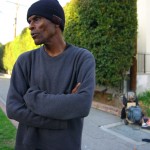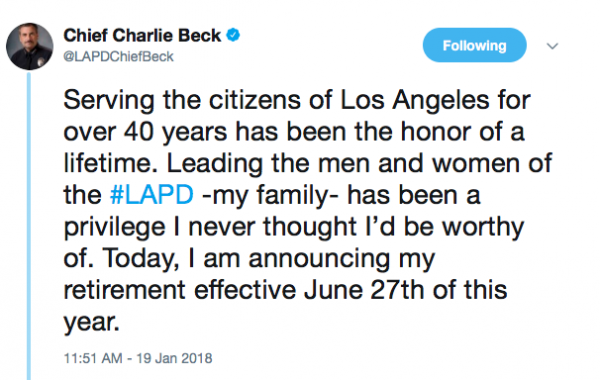 ards away.
ards away.Tag Archives: homicide
LAPD Chief Charlie Beck and What Really Matters
 ards away.
ards away.Filed under California, Gangs, Los Angeles
L.A. Murder – Not The Real Story Any More
It would have been easy to miss some stunning news a few days ago.
It came buried in the back pages of a December 30 LA Times article on how crime was rising. Rising across the board! First 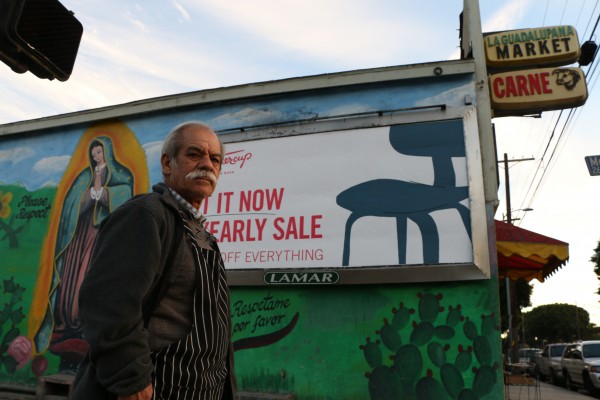 time since 2003! Yikes!
time since 2003! Yikes!
The real stunning story, though, was this:
The city will register only 280 homicides for all of 2015. That would seem sad, and for 280 victims and their families and friends, it most certainly is – I can say this as a reporter who has covered hundreds of murders in his career. I know how murder can destroy not just one life, but the lives of the surviving family as well.
To understand, however, why that number could actually be encouraging news, a remarkable event, you need the context. Here’s some:
Pitched as a 10 percent increase, 280 homicides is actually the city’s third lowest homicide figure since 2000 and part of a drop in crime that has been going on since roughly 2007. In fact, apart from 2013-2014, the city hasn’t had that few homicides since 1967, when L.A.’s population was a third smaller than it is today (roughly 2.4 million people then compared with 3.8 million today).
You’ll remember, perhaps, that in August there was a collective freak-out at the increase in homicides that month. I thought folks should have maintained some calm and context, and dealt with it seriously and professionally, which is what it appears LAPD proceeded to do. The rest of the year saw monthly homicide numbers fall again.
My guess is that in a heavily armed culture, and a very large city, we won’t see homicides dropping to, say, 200 a year. So it’s possible that we’re at about the lowest crime levels a city the size of L.A. can reasonably produce. I’d love to be proved wrong, but barring a deep change in our permissive gun culture or a massive tax increase doubling the size of the LAPD, I’d bet against it.
If those numbers crept up consistently year after year, that would be cause for great concern. But at this point, if crime figures rise 10 percent, or drop by that much, from one year to the next, it’s worth understanding and addressing with calm and context — but not frothing over.
I say this after, again, years as a crime reporter, and fully aware that some areas of the city, and of the region, still have serious problems and that these need attention.
Nor am I saying murder is okay if it’s below a certain number. Just that there are stories we ought also to pay attention to.
The real story is not that crime or homicide rose 10 percent.
The real story is that, while we witness blooms of intercultural savagery around the world, in our region of races, languages, and religions from every corner of the globe, crime has become negligible – a minor part of life and not just for wealthy folks, but, importantly and especially, for working people.
Some notorious headlines notwithstanding – yes, Rodney King, we can all get along and, by and large, in Southern California, we are. In the end, the 2015 homicide figures, as painful as they are for some families, did reflect that.
(Hate crime, btw, is almost nonexistent, certainly compared to the volume and the sheer violence of those crimes in the early and mid-2000s, most of them committed by Latino street gangs against blacks, which you can read more about in a chapter essay that I wrote for this anthology.)
The real story is that this drop in crime began during the country’s Great Recession, and is taking place in a region where poorly paid service jobs have replaced so many good-paying union jobs with solid benefits; where dense apartment complexes have replaced so many single-family homes.
The real story is how many working-class neighborhoods, where murder once stunted life and commerce, are now mercifully at peace, and property values are reflecting that.
And, above all, the real story is that gang violence has dropped so precipitously. (Remember: L.A. used to have way more than 280 gang-related homicides, in years when total homicides topped a thousand.) And so has gangs’ public behavior that did so much to blight those working-class neighborhoods that could least afford their crap. Gangs no longer have the run of the region.
This morning I was out on a street that was notorious for its gang in the 1990s. I found it quiet, pleasant, unscarred by graffiti. On the contrary, the houses seemed improved, freshly painted – one of many such neighborhoods all across Southern California.
Later, I was in Lincoln Park, talking with Braulio Garcia, a Mexican immigrant who has owned La Guadalupana Market (pictured above) since 1988. Up to about decade ago, he said, gangs were everywhere in Lincoln Park. A few blocks away is a gang mural, apparently from the 1990s, that lists the members of the neighborhood crew, and giving an RIP to a few friends who didn’t make it. Now, Mr. Garcia told me, he doesn’t see gangs or their graffiti at all.
Certainly lifted my spirits.
So on that note I’ll leave you, while daring to suggest that things are looking up, and hoping, meanwhile, that we have a Happy New Year, one and all.
Filed under California, Drugs, Gangs, Los Angeles, Southern California
Jill Leovy’s Ghettoside
Six percent of Americans are black men. Forty percent of homicide victims are black men, most by far killed by other black men, though many of the cases remain unsolved.
This kind of impunity is the result not of too much policing but of far too little. Too often police in places like South L.A.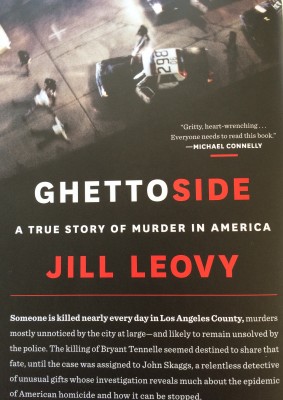 are swamped, given the caseload and resources at their disposal. They can make little of each murder case, which, once unsolved, strengthens the culture of impunity and of witness silence, and encourages more murder.
are swamped, given the caseload and resources at their disposal. They can make little of each murder case, which, once unsolved, strengthens the culture of impunity and of witness silence, and encourages more murder.
That is the analysis of my colleague at the L.A. Times, Jill Leovy, in her great new book, Ghettoside, based on years of her reporting and research in South Los Angeles.
I’m only a little way into the book, having purchased it only last night. But this already seems like some of the most original, clear, observation-driven thinking on crime that I’ve read in years – and brave as well given the current discourse over policing in the black community.
Here’s some of what she writes:
“…where the criminal justice system fails to respond vigorously to violent injury and death, homicide becomes endemic. … African Americans have suffered from just such a lack of effective criminal justice, and this, more than anything, is the reason for the nation’s long-standing plague of black homicides. Specifically, black America has not benefited from what Max Weber called a state monopoly on violence – the government’s exclusive right to exercise legitimate force. … Slavery, Jim Crow, and conditions across much of black America for generations after worked against the formation of such a monopoly. Since personal violence inevitably flares where the state’s monopoly is absent, this situation results in the deaths of thousands of Americans each year.”
Reading on. Can’t wait for more.
Filed under Books, California, Los Angeles, Writing
Is This How Gangs End?
I’m very proud of my cover story in the January’s edition of Pacific Standard Magazine about the decline of gang violence and gang presence in Southern California.
I’ve been watching this phenomenon quietly unfold for several years. It amounts to a revolution in criminal behavior in the region that essentially invented the modern street gang, then exported it to much of America.
It’s not necessarily to say that, literally, all gangs have stopped existing, though some have. Rather, it’s to say that their behavior is so much more underground, low-profile, so quiet, that it amounts to about the same thing for many working-class neighborhoods that were besieged by these guys for so long. Some are still active but none is as active as gangs were a decade or two ago.
These were truly street gangs, meaning they took their power, identity and reputation from their streets and how well they “defended” them.
Areas like Drew Street, mentioned in the piece, are now seeing a resurgence that was denied them for many years due to the stifling presence of their local gangs.
Anyway, I hope you like the piece. Daily Beast selected it as one of the Best Longreads of the Week – so that was nice….Let me know what you think, please.
Filed under California, Gangs, Los Angeles, Southern California
LOS ANGELES: Dwayne Alexander
I spent yesterday on the story of Dwayne Alexander, the counselor at the Los Angeles Job Corps who was stabbed to death Wednesday by one of the students at the center.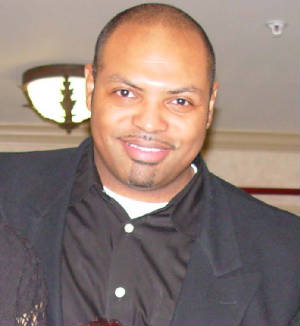
I was struck by how his friends, some from years ago, spoke about him, and overwhelmed because of that, as the day went on, by what a sweet and solid guy he must have been in life. They described him as “a gentle soul” and “a very kind spirit,” rarely angry and never a braggart. These would be rare qualities, I suspect, in the world of record label promotion, which is where he spent much of his career. I suspect also that they would have been enormously helpful as a job counselor for youths on the edge.
He seemed also the kind of guy who had a long-term goal — screenwriting and production — that was his guiding compass. No matter what he did, he was headed that way.
But he interrupted it all to go back home to Tulsa to help his mother recover from double knee-replacement surgery a few years back.
“People say the good die young,” R&B singer Millie Jackson told me, “and this was a totally good example of that.”
Filed under Los Angeles, Southern California, Streets
STREETS: Looking for Amber
I’m doing a story now about a young fellow, Nathan Vickers, who was a drag queen or a transgender woman, and was shot to death on a street known as a prostitute hangout in Hollywood in November.
Part of the story is exactly who Nathan Vickers – or “Chase,” or “Cassidy,” or “Chastity” – was, or intended to be. He’d come from the Bay Area and seemed to seeking a transformation of one kind or another.
Helping me figure out Nathan’s world is Troy Erik, a former queen and current activist. A woman named Amber, he told me, knew Nathan well in the days leading up to his death. We went looking for her, as we’d heard she was just out of jail.
We looked at Donut Time (Santa Monica and Highland) and at the adult bookstore (no name) behind it, and in front of the $1 Chinese Express, whose prices didn’t keep it from going out of business.
We never did find Amber. But Andre, a sociable street fellow, said he’d known Chase or Cassidy. “She always dressed as a woman when I knew her,” he said.
We also happened upon “Grace” – a queen who enjoyed enormous renown in the 1980s because she looked, in drag, exactly like pop diva Grace Jones, and is now homeless. That’s next post.
Filed under Los Angeles, Streets
STREETS: Grace
Out on the story about Nathan Vickers, the transgender woman shot and killed in Hollywood in November, we came across Grace.
Grace says he’s from Ogden, Utah — where growing up black and gay in the 1960s must have been … a real story. He told me he had the pleasure that few in California have had of ice skating on a real frozen pond in Utah.
She was once legendary on the streets of Hollywood as a drag queen who looked remarkably like pop diva Grace Jones. Then it was parties, and a wild life, and nightclub shows where she was the center of attention.
“She was the queen of them all,” said my guide, Troy Erik. Then? “Well, drugs,” said Troy.
Now Grace lives in the back of a Hollywood Park, with a man he calls his husband, and a shopping cart full of stuff and can talk non-stop, like free-form jazz, of the stories of when she was beautiful and everyone wanted her.
Filed under Streets



